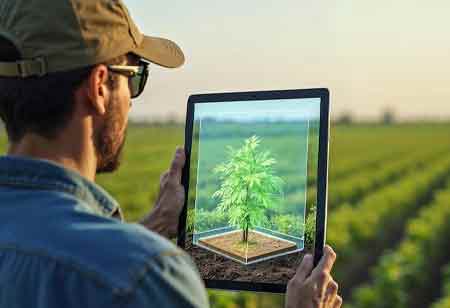Thank you for Subscribing to Agri Business Review Weekly Brief
Advancements in Seed Technology
Companies have leveraged machine learning and advanced algorithms to optimize the selection of parent plants, enabling the efficient development of hybrid seeds.

By
Agri Business Review | Friday, February 28, 2025
Stay ahead of the industry with exclusive feature stories on the top companies, expert insights and the latest news delivered straight to your inbox. Subscribe today.
Fremont, CA: Agricultural science has made remarkable progress recently, with seed technology becoming a key innovation focus. Breakthroughs in seed technology are essential for developing resilient, high-yield crops that use fewer resources. These innovations, from genetic advancements to biological coatings, are set to revolutionize farming practices, enhance food security, and support sustainable agriculture.
The most groundbreaking advances in recent years have been the application of CRISPR (Clustered Regularly Interspaced Short Palindromic Repeats) gene-editing technology to seed development. Unlike traditional genetic modification, which often involves inserting foreign genes, CRISPR allows scientists to edit the plant's DNA quickly. Hybrid seeds are not new; they are produced by cross-breeding different plant varieties to combine desirable traits. Recent advances in hybrid seed technology have improved the consistency and performance of these seeds. Hybrid seeds are helping to meet the demands of a growing population while requiring less land and fewer resources.
Bio-priming is an innovative seed treatment technique that involves coating seeds with beneficial microbes. The microbial coatings can improve plant health by promoting nutrient uptake, enhancing growth, and protecting against soil-borne diseases. Some bio-primed seeds contain microbes that fix nitrogen, reducing the need for synthetic fertilizers and making farming more environmentally friendly. The coatings can increase a seed's resistance to stress factors such as drought and salinity. Bio-primed seeds are precious for organic and regenerative agriculture, as they offer a sustainable alternative to chemical treatments and promote healthier soil ecosystems.
A recent and fascinating development in seed technology is the creation of "smart seeds" embedded with tiny sensors. Farmers can make data-driven decisions to optimize watering, fertilization, and pest control by planting smart seeds, reducing waste, and improving crop health. Though still in experimental stages, these sensor-enabled seeds could revolutionize precision agriculture, helping farmers monitor and manage crops on a highly localized level. Climate change presents significant challenges for agriculture, prompting a surge in the development of climate-resilient seed varieties.
Researchers are engineering seeds to thrive under changing climate conditions, such as higher temperatures, unpredictable rainfall, and soil degradation. For example, some seed varieties have been designed to grow in marginal soils, which are typically too poor for traditional crops. By breeding seeds for resilience, scientists hope to create crop varieties that can withstand the pressures of climate change, helping farmers maintain productivity even in difficult growing seasons.
Seed pelleting, a technique that involves encasing seeds in a protective coating, is another recent innovation designed to enhance growth uniformity and ease of planting. These coatings often contain nutrients, growth-promoting substances, and even pesticides, which provide the seed with essential elements as it germinates. Pelleted seeds benefit small or irregularly shaped seeds, as the coating standardizes their shape and size, allowing for more precise planting. For high-value crops like vegetables and herbs, seed pelleting helps ensure even spacing, germination, and growth, resulting in more efficient use of space and resources.





